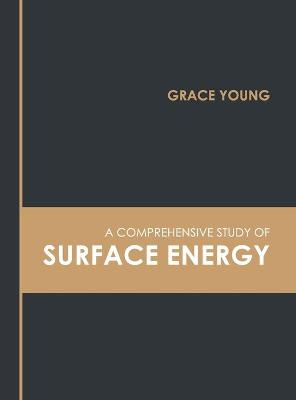Progress in Adhesion and Adhesives, Volume 8
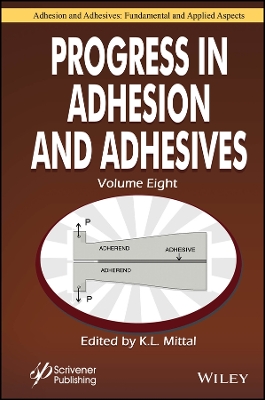 portes grátis
portes grátis
Progress in Adhesion and Adhesives, Volume 8
Mittal, K. L.
John Wiley & Sons Inc
09/2024
432
Dura
Inglês
9781394238200
15 a 20 dias
Descrição não disponível.
Preface xiii
1 Limitations of Multicomponent Theories in Surface Thermodynamics and Adhesion Science 1
C. Della Volpe and S. Siboni
1.1 Introduction 1
1.2 Acid-Base Theories 7
1.2.1 Owens-Wendt Model 9
1.2.2 van Oss-Chaudhury-Good (vOCG) Theory 10
1.2.3 Chang-Chen Theory 13
1.3 General Criticism of Acid-Base Theories 17
1.3.1 About High-Energy Solid Surfaces 17
1.3.2 About Geometric Mean Approximation for Dispersion Interactions 19
1.3.3 Tabulated Values of Surface Free Energy Components for Standard Liquids 20
1.3.4 Connections with Linear Free Energy Relationships and Multiplicity of Scales 21
1.4 Criticism of Specific Acid-Base Models 23
1.4.1 Owens-Wendt Model 23
1.4.2 van Oss, Chaudhury, and Good Acid-Base Model 24
1.4.3 Chang-Chen Acid-Base Model 26
1.5 More Fundamental Criticism of Acid-Base Models 26
1.6 Summary 29
2 Plasma-Deposited Polymer Layers as Adhesion Promoters 37
Joerg Florian Friedrich
2.1 Introduction 38
2.1.1 History 38
2.1.2 General View on Adhesion Promotion 39
2.1.3 Importance of Adhesion-Promoting Polymer Layers 44
2.1.4 Virtues of Plasma Polymer Layers 46
2.1.5 Attempts to Modify Fillers, Fibers and Foils with Adhesion-Promoting Plasma Polymers 49
2.2 Parameters Affecting the Performance of Plasma Polymer Layer 52
2.2.1 Chemical Nature of Plasma Polymer 52
2.2.2 Plasma Polymerization Mechanism 55
2.2.3 Adhesion Promotion 57
2.2.4 Loss of Monosort Functional Groups During Plasma Polymerization 59
2.2.4.1 Allylamine 59
2.2.4.2 Allyl Alcohol 62
2.2.4.3 Acrylic Acid 63
2.2.4.4 Allyl Bromide 63
2.2.5 Problematic Aspects of Plasma Polymers 64
2.2.6 Thickness Variation 69
2.2.7 Mechanical Properties of Plasma Polymers 69
2.2.8 Need for Flexibility Along the Interface 70
2.2.9 Supermolecular Structures in Plasma Polymers? 71
2.2.10 Trapped Radicals as Adhesion Promoter 71
2.3 Effect of Plasma Polymer Layers on Adhesion of Laminates 76
2.3.1 Peel Strength of Plasma Polymers to Metals and Polymers 76
2.3.2 Influence of Flexibility Along the Aluminium-Plasma Polymer Interface on Peel Strength 78
2.3.3 Dependence of Al Adhesion to Functional Group of Plasma Polymer 80
2.3.4 Plasma Polymers as Substitute for Flexible Aliphatic Spacer Molecules 81
2.3.5 Variation of the Density of Functional Groups by Copolymerization in the Plasma 85
2.3.6 Ultimate Adhesion 86
2.3.7 Atmospheric Barrier Discharge 91
2.3.8 Prevention of Post-Plasma Ageing of Deposited Plasma Polymer Films 95
2.3.9 Other Alternatives for Deposition of Adhesion-Promoting Polymer Layers 97
2.4 Summary and Conclusions 103
3 Functional Interlayers Developed to Control Interfacial Adhesion in Polymer Composites Reinforced with Glass and Basalt Fibers 119
Tomas Plichta and Vladimir Cech
3.1 Introduction 120
3.2 Materials and Methods 123
3.2.1 Materials 123
3.2.2 Deposition Chambers 125
3.2.3 Thin Film Deposition 125
3.2.4 Spectroscopic Ellipsometry 126
3.2.5 Mechanical Profilometry 126
3.2.6 Mass Spectrometry 127
3.2.7 Fourier Transform Infrared Spectrometry -- FTIR 127
3.2.8 X-Ray Photoelectron Spectroscopy -- XPS 128
3.2.9 Rutherford Backscattering Spectrometry and Elastic Recoil Detection Analysis 128
3.2.10 Surface Free Energy 129
3.2.11 Nanoscratch Test and Friction Test 129
3.2.12 Nanoindentation 131
3.2.13 Modulus Mapping 132
3.2.14 Atomic Force Microscopy 133
3.2.15 Composite Preparation 134
3.2.16 Microindentation Test 134
3.2.17 Short-Beam Shear Test 135
3.2.18 Push-Out Test 136
3.3 Results and Discussion 137
3.3.1 Why Tetravinylsilane? 137
3.3.2 What is a More Appropriate Quantity to Characterize Adhesion: Critical Normal Load or Work of Adhesion 140
3.3.3 Study of Interphase Region 150
3.3.4 From Thin Films Adhesion to the Interfacial Shear Strength of Composites 154
3.3.5 Influence of Pretreatment and Post-Treatment of GFs and Deposited Interlayers and Bilayers on IFSS 164
3.3.6 From Critical Normal Load through Micromechanical to Macromechanical Properties GFRCs 166
3.3.7 Basalt Fibers in Reinforced Composites 175
3.4 Prospects 177
3.5 Summary 178
3.6 Acknowledgement 180
4 Hydrophobic Materials and Coatings from Natural Sources 189
Salvador Perez-Huertas, Thomas Len and Konrad Terpilowski
4.1 Introduction 190
4.2 Hydrophobization of Natural Materials 193
4.2.1 Chemical Modifications 193
4.2.2 Physical Modifications 201
4.3 Bio-Based Coatings 207
4.4 Bio-Based Hydrophobic Surfaces and Coatings; Applications 208
4.5 Summary and Outlook 212
5 Mechanics of Ice Adhesion 221
Sina Nazifi and Hadi Ghasemi
5.1 Introduction 222
5.2 Work of Adhesion 223
5.2.1 Interfacial Bonds 225
5.2.2 Roughness 226
5.2.3 Plastic Energy Dissipation 227
5.3 Macroscopic Work of Fracture 228
5.3.1 Energy Release Rate 230
5.3.2 Interface Crack Growth Resistance 231
5.4 Modeling of Ice Adhesion 233
5.4.1 Ice Adhesion to Plastics 233
5.4.2 Ice Adhesion to Elastomers 234
5.4.3 Ice Adhesion to Non-Homogeneous Surfaces 236
5.4.4 Ice Adhesion to Plasticized Polymers 237
5.4.5 Ice Adhesion to Low Interfacial Toughness Surfaces 238
5.4.6 Ice Adhesion to Fracture-Controlled Surfaces 239
5.5 Fracture Mechanics Approach to Describe the Ice Adhesion 241
5.6 Summary 245
6 Epoxy Adhesive Technology: Latest Developments and New Trends 251
Chunfu Chen
6.1 Introduction 252
6.2 Thermal Low Temperature Cure Epoxy Adhesives 253
6.3 Thermal Snap Cure Epoxy Bonding Technology 260
6.4 UV Cure Cationic Epoxy Adhesive 262
6.5 Dual Cure Hybrid Epoxy Adhesive 265
6.6 High Performance Toughened Epoxy Adhesive 269
6.7 Sustainable Epoxy Adhesive Development 270
6.8 Summary 272
7 Emerging Applications of Hot-Melt Adhesives for Automobile Assembly 283
Sarang Subhashchandra Shindalkar and Balasubramanian Kandasubramanian
p>7.1 Introduction 284 7.2 Automobile Assembly 285
7.3 Parameters Studied to Determine HMA Performance 286
7.3.1 Glass Transition Temperature (Tg) 287
7.3.3 Density as a Function of Temperature 289
7.3.4 Single Lap Joint (SLJ) Test 290
7.3.5 Environmental Stability 290
7.4 Commercially Available HMA Products in Automotive Industry 292
7.5 Prospects 297
7.6 Summary 297
8 Lifetime Estimation of Thermoset Adhesives by Physical and Chemical Ageing Processes 305
Bikash Chandra Chakraborty
8.1 Introduction 306
8.1.1 Physical and Chemical Ageing of Polymers 306
8.1.2 Ageing of Adhesives 308
8.1.3 Design of Ageing Study 309
8.2 Physical Ageing 310
8.2.1 Segmental Relaxation and Transitions 310
8.2.2 Concept of Approach to Equilibrium 311
8.2.3 Basic Characteristics 312
8.2.4 Instantaneous and Delayed Creep 315
8.2.4.1 Time-Temperature Superposition 318
8.2.4.2 Time-Temperature-Stress Superposition 320
8.2.4.3 Example of Physical Ageing 323
8.2.4.4 Criticality in Physical Ageing Study 328
8.2.4.5 Conclusion 329
8.2.5 Ageing Study with Stress & Temperature 329
8.3 Chemical Ageing 335
8.3.1 Thermal Degradation Study by TGA 336
8.3.2 Basic TGA Kinetic Expression 337
8.3.3 Isoconversion and Model-Free Kinetics 339
8.3.3.1 Differential Methods 339
8.3.3.2 Integral Methods 341
8.3.3.3 Combined Method 341
8.3.3.4 Advanced Isoconversion Kinetics 343
8.3.3.5 Accuracy of Kinetic Parameters 343
8.3.4 Life Estimation 347
8.3.4.1 Example 349
8.3.4.2 Conclusion 354
8.4 Summary 355
9 Progress in Nondestructive Evaluation and Condition Monitoring of Adhesive Joints 361
Pouria Meshkizadeh and Mohammadreza Farahani
9.1 Introduction 361
9.2 Acoustic Emission (AE) 363
9.2.1 Common Acoustic Emission Features and Operating Parameters 364
9.2.2 AE for Locating Damage Source 365
9.2.3 AE for Damage Evaluation 365
9.3 Infrared Thermography (IRT) 374
9.3.1 Active IRT for Damage Evaluation 375
9.3.2 IRT for Monitoring Structural Integrity of Loaded Structures 379
9.3.3 Estimating the Depth of Defects 381
9.4 Electrical Impedance Tomography (EIT) 382
9.4.1 EIT for Evaluating the Quality of Conductive Network 383
9.4.2 EIT for Damage Stage Evaluation and Defect Detection 385
9.5 Other Advanced Methods 388
9.5.1 Digital Image Correlation (DIC) 388
9.5.2 Ultrasonic Test (UT) 391
9.6 Summary 393
References 394
Index 405
1 Limitations of Multicomponent Theories in Surface Thermodynamics and Adhesion Science 1
C. Della Volpe and S. Siboni
1.1 Introduction 1
1.2 Acid-Base Theories 7
1.2.1 Owens-Wendt Model 9
1.2.2 van Oss-Chaudhury-Good (vOCG) Theory 10
1.2.3 Chang-Chen Theory 13
1.3 General Criticism of Acid-Base Theories 17
1.3.1 About High-Energy Solid Surfaces 17
1.3.2 About Geometric Mean Approximation for Dispersion Interactions 19
1.3.3 Tabulated Values of Surface Free Energy Components for Standard Liquids 20
1.3.4 Connections with Linear Free Energy Relationships and Multiplicity of Scales 21
1.4 Criticism of Specific Acid-Base Models 23
1.4.1 Owens-Wendt Model 23
1.4.2 van Oss, Chaudhury, and Good Acid-Base Model 24
1.4.3 Chang-Chen Acid-Base Model 26
1.5 More Fundamental Criticism of Acid-Base Models 26
1.6 Summary 29
2 Plasma-Deposited Polymer Layers as Adhesion Promoters 37
Joerg Florian Friedrich
2.1 Introduction 38
2.1.1 History 38
2.1.2 General View on Adhesion Promotion 39
2.1.3 Importance of Adhesion-Promoting Polymer Layers 44
2.1.4 Virtues of Plasma Polymer Layers 46
2.1.5 Attempts to Modify Fillers, Fibers and Foils with Adhesion-Promoting Plasma Polymers 49
2.2 Parameters Affecting the Performance of Plasma Polymer Layer 52
2.2.1 Chemical Nature of Plasma Polymer 52
2.2.2 Plasma Polymerization Mechanism 55
2.2.3 Adhesion Promotion 57
2.2.4 Loss of Monosort Functional Groups During Plasma Polymerization 59
2.2.4.1 Allylamine 59
2.2.4.2 Allyl Alcohol 62
2.2.4.3 Acrylic Acid 63
2.2.4.4 Allyl Bromide 63
2.2.5 Problematic Aspects of Plasma Polymers 64
2.2.6 Thickness Variation 69
2.2.7 Mechanical Properties of Plasma Polymers 69
2.2.8 Need for Flexibility Along the Interface 70
2.2.9 Supermolecular Structures in Plasma Polymers? 71
2.2.10 Trapped Radicals as Adhesion Promoter 71
2.3 Effect of Plasma Polymer Layers on Adhesion of Laminates 76
2.3.1 Peel Strength of Plasma Polymers to Metals and Polymers 76
2.3.2 Influence of Flexibility Along the Aluminium-Plasma Polymer Interface on Peel Strength 78
2.3.3 Dependence of Al Adhesion to Functional Group of Plasma Polymer 80
2.3.4 Plasma Polymers as Substitute for Flexible Aliphatic Spacer Molecules 81
2.3.5 Variation of the Density of Functional Groups by Copolymerization in the Plasma 85
2.3.6 Ultimate Adhesion 86
2.3.7 Atmospheric Barrier Discharge 91
2.3.8 Prevention of Post-Plasma Ageing of Deposited Plasma Polymer Films 95
2.3.9 Other Alternatives for Deposition of Adhesion-Promoting Polymer Layers 97
2.4 Summary and Conclusions 103
3 Functional Interlayers Developed to Control Interfacial Adhesion in Polymer Composites Reinforced with Glass and Basalt Fibers 119
Tomas Plichta and Vladimir Cech
3.1 Introduction 120
3.2 Materials and Methods 123
3.2.1 Materials 123
3.2.2 Deposition Chambers 125
3.2.3 Thin Film Deposition 125
3.2.4 Spectroscopic Ellipsometry 126
3.2.5 Mechanical Profilometry 126
3.2.6 Mass Spectrometry 127
3.2.7 Fourier Transform Infrared Spectrometry -- FTIR 127
3.2.8 X-Ray Photoelectron Spectroscopy -- XPS 128
3.2.9 Rutherford Backscattering Spectrometry and Elastic Recoil Detection Analysis 128
3.2.10 Surface Free Energy 129
3.2.11 Nanoscratch Test and Friction Test 129
3.2.12 Nanoindentation 131
3.2.13 Modulus Mapping 132
3.2.14 Atomic Force Microscopy 133
3.2.15 Composite Preparation 134
3.2.16 Microindentation Test 134
3.2.17 Short-Beam Shear Test 135
3.2.18 Push-Out Test 136
3.3 Results and Discussion 137
3.3.1 Why Tetravinylsilane? 137
3.3.2 What is a More Appropriate Quantity to Characterize Adhesion: Critical Normal Load or Work of Adhesion 140
3.3.3 Study of Interphase Region 150
3.3.4 From Thin Films Adhesion to the Interfacial Shear Strength of Composites 154
3.3.5 Influence of Pretreatment and Post-Treatment of GFs and Deposited Interlayers and Bilayers on IFSS 164
3.3.6 From Critical Normal Load through Micromechanical to Macromechanical Properties GFRCs 166
3.3.7 Basalt Fibers in Reinforced Composites 175
3.4 Prospects 177
3.5 Summary 178
3.6 Acknowledgement 180
4 Hydrophobic Materials and Coatings from Natural Sources 189
Salvador Perez-Huertas, Thomas Len and Konrad Terpilowski
4.1 Introduction 190
4.2 Hydrophobization of Natural Materials 193
4.2.1 Chemical Modifications 193
4.2.2 Physical Modifications 201
4.3 Bio-Based Coatings 207
4.4 Bio-Based Hydrophobic Surfaces and Coatings; Applications 208
4.5 Summary and Outlook 212
5 Mechanics of Ice Adhesion 221
Sina Nazifi and Hadi Ghasemi
5.1 Introduction 222
5.2 Work of Adhesion 223
5.2.1 Interfacial Bonds 225
5.2.2 Roughness 226
5.2.3 Plastic Energy Dissipation 227
5.3 Macroscopic Work of Fracture 228
5.3.1 Energy Release Rate 230
5.3.2 Interface Crack Growth Resistance 231
5.4 Modeling of Ice Adhesion 233
5.4.1 Ice Adhesion to Plastics 233
5.4.2 Ice Adhesion to Elastomers 234
5.4.3 Ice Adhesion to Non-Homogeneous Surfaces 236
5.4.4 Ice Adhesion to Plasticized Polymers 237
5.4.5 Ice Adhesion to Low Interfacial Toughness Surfaces 238
5.4.6 Ice Adhesion to Fracture-Controlled Surfaces 239
5.5 Fracture Mechanics Approach to Describe the Ice Adhesion 241
5.6 Summary 245
6 Epoxy Adhesive Technology: Latest Developments and New Trends 251
Chunfu Chen
6.1 Introduction 252
6.2 Thermal Low Temperature Cure Epoxy Adhesives 253
6.3 Thermal Snap Cure Epoxy Bonding Technology 260
6.4 UV Cure Cationic Epoxy Adhesive 262
6.5 Dual Cure Hybrid Epoxy Adhesive 265
6.6 High Performance Toughened Epoxy Adhesive 269
6.7 Sustainable Epoxy Adhesive Development 270
6.8 Summary 272
7 Emerging Applications of Hot-Melt Adhesives for Automobile Assembly 283
Sarang Subhashchandra Shindalkar and Balasubramanian Kandasubramanian
p>7.1 Introduction 284 7.2 Automobile Assembly 285
7.3 Parameters Studied to Determine HMA Performance 286
7.3.1 Glass Transition Temperature (Tg) 287
7.3.3 Density as a Function of Temperature 289
7.3.4 Single Lap Joint (SLJ) Test 290
7.3.5 Environmental Stability 290
7.4 Commercially Available HMA Products in Automotive Industry 292
7.5 Prospects 297
7.6 Summary 297
8 Lifetime Estimation of Thermoset Adhesives by Physical and Chemical Ageing Processes 305
Bikash Chandra Chakraborty
8.1 Introduction 306
8.1.1 Physical and Chemical Ageing of Polymers 306
8.1.2 Ageing of Adhesives 308
8.1.3 Design of Ageing Study 309
8.2 Physical Ageing 310
8.2.1 Segmental Relaxation and Transitions 310
8.2.2 Concept of Approach to Equilibrium 311
8.2.3 Basic Characteristics 312
8.2.4 Instantaneous and Delayed Creep 315
8.2.4.1 Time-Temperature Superposition 318
8.2.4.2 Time-Temperature-Stress Superposition 320
8.2.4.3 Example of Physical Ageing 323
8.2.4.4 Criticality in Physical Ageing Study 328
8.2.4.5 Conclusion 329
8.2.5 Ageing Study with Stress & Temperature 329
8.3 Chemical Ageing 335
8.3.1 Thermal Degradation Study by TGA 336
8.3.2 Basic TGA Kinetic Expression 337
8.3.3 Isoconversion and Model-Free Kinetics 339
8.3.3.1 Differential Methods 339
8.3.3.2 Integral Methods 341
8.3.3.3 Combined Method 341
8.3.3.4 Advanced Isoconversion Kinetics 343
8.3.3.5 Accuracy of Kinetic Parameters 343
8.3.4 Life Estimation 347
8.3.4.1 Example 349
8.3.4.2 Conclusion 354
8.4 Summary 355
9 Progress in Nondestructive Evaluation and Condition Monitoring of Adhesive Joints 361
Pouria Meshkizadeh and Mohammadreza Farahani
9.1 Introduction 361
9.2 Acoustic Emission (AE) 363
9.2.1 Common Acoustic Emission Features and Operating Parameters 364
9.2.2 AE for Locating Damage Source 365
9.2.3 AE for Damage Evaluation 365
9.3 Infrared Thermography (IRT) 374
9.3.1 Active IRT for Damage Evaluation 375
9.3.2 IRT for Monitoring Structural Integrity of Loaded Structures 379
9.3.3 Estimating the Depth of Defects 381
9.4 Electrical Impedance Tomography (EIT) 382
9.4.1 EIT for Evaluating the Quality of Conductive Network 383
9.4.2 EIT for Damage Stage Evaluation and Defect Detection 385
9.5 Other Advanced Methods 388
9.5.1 Digital Image Correlation (DIC) 388
9.5.2 Ultrasonic Test (UT) 391
9.6 Summary 393
References 394
Index 405
Este título pertence ao(s) assunto(s) indicados(s). Para ver outros títulos clique no assunto desejado.
Adhesion; Adhesion Science; Adhesives; Multicomponent Theories; Plasma-Deposited Polymer Layers; Adhesion Promotors; Interfacial Adhesion; Polymer Composites; Hydrophobic Materials; Ice Adhesion; Epoxy Adhesives Technology; Hot-Melt Adhesives; Thermoset Adhesives; Adhesive Joints; Chemical Aging
Preface xiii
1 Limitations of Multicomponent Theories in Surface Thermodynamics and Adhesion Science 1
C. Della Volpe and S. Siboni
1.1 Introduction 1
1.2 Acid-Base Theories 7
1.2.1 Owens-Wendt Model 9
1.2.2 van Oss-Chaudhury-Good (vOCG) Theory 10
1.2.3 Chang-Chen Theory 13
1.3 General Criticism of Acid-Base Theories 17
1.3.1 About High-Energy Solid Surfaces 17
1.3.2 About Geometric Mean Approximation for Dispersion Interactions 19
1.3.3 Tabulated Values of Surface Free Energy Components for Standard Liquids 20
1.3.4 Connections with Linear Free Energy Relationships and Multiplicity of Scales 21
1.4 Criticism of Specific Acid-Base Models 23
1.4.1 Owens-Wendt Model 23
1.4.2 van Oss, Chaudhury, and Good Acid-Base Model 24
1.4.3 Chang-Chen Acid-Base Model 26
1.5 More Fundamental Criticism of Acid-Base Models 26
1.6 Summary 29
2 Plasma-Deposited Polymer Layers as Adhesion Promoters 37
Joerg Florian Friedrich
2.1 Introduction 38
2.1.1 History 38
2.1.2 General View on Adhesion Promotion 39
2.1.3 Importance of Adhesion-Promoting Polymer Layers 44
2.1.4 Virtues of Plasma Polymer Layers 46
2.1.5 Attempts to Modify Fillers, Fibers and Foils with Adhesion-Promoting Plasma Polymers 49
2.2 Parameters Affecting the Performance of Plasma Polymer Layer 52
2.2.1 Chemical Nature of Plasma Polymer 52
2.2.2 Plasma Polymerization Mechanism 55
2.2.3 Adhesion Promotion 57
2.2.4 Loss of Monosort Functional Groups During Plasma Polymerization 59
2.2.4.1 Allylamine 59
2.2.4.2 Allyl Alcohol 62
2.2.4.3 Acrylic Acid 63
2.2.4.4 Allyl Bromide 63
2.2.5 Problematic Aspects of Plasma Polymers 64
2.2.6 Thickness Variation 69
2.2.7 Mechanical Properties of Plasma Polymers 69
2.2.8 Need for Flexibility Along the Interface 70
2.2.9 Supermolecular Structures in Plasma Polymers? 71
2.2.10 Trapped Radicals as Adhesion Promoter 71
2.3 Effect of Plasma Polymer Layers on Adhesion of Laminates 76
2.3.1 Peel Strength of Plasma Polymers to Metals and Polymers 76
2.3.2 Influence of Flexibility Along the Aluminium-Plasma Polymer Interface on Peel Strength 78
2.3.3 Dependence of Al Adhesion to Functional Group of Plasma Polymer 80
2.3.4 Plasma Polymers as Substitute for Flexible Aliphatic Spacer Molecules 81
2.3.5 Variation of the Density of Functional Groups by Copolymerization in the Plasma 85
2.3.6 Ultimate Adhesion 86
2.3.7 Atmospheric Barrier Discharge 91
2.3.8 Prevention of Post-Plasma Ageing of Deposited Plasma Polymer Films 95
2.3.9 Other Alternatives for Deposition of Adhesion-Promoting Polymer Layers 97
2.4 Summary and Conclusions 103
3 Functional Interlayers Developed to Control Interfacial Adhesion in Polymer Composites Reinforced with Glass and Basalt Fibers 119
Tomas Plichta and Vladimir Cech
3.1 Introduction 120
3.2 Materials and Methods 123
3.2.1 Materials 123
3.2.2 Deposition Chambers 125
3.2.3 Thin Film Deposition 125
3.2.4 Spectroscopic Ellipsometry 126
3.2.5 Mechanical Profilometry 126
3.2.6 Mass Spectrometry 127
3.2.7 Fourier Transform Infrared Spectrometry -- FTIR 127
3.2.8 X-Ray Photoelectron Spectroscopy -- XPS 128
3.2.9 Rutherford Backscattering Spectrometry and Elastic Recoil Detection Analysis 128
3.2.10 Surface Free Energy 129
3.2.11 Nanoscratch Test and Friction Test 129
3.2.12 Nanoindentation 131
3.2.13 Modulus Mapping 132
3.2.14 Atomic Force Microscopy 133
3.2.15 Composite Preparation 134
3.2.16 Microindentation Test 134
3.2.17 Short-Beam Shear Test 135
3.2.18 Push-Out Test 136
3.3 Results and Discussion 137
3.3.1 Why Tetravinylsilane? 137
3.3.2 What is a More Appropriate Quantity to Characterize Adhesion: Critical Normal Load or Work of Adhesion 140
3.3.3 Study of Interphase Region 150
3.3.4 From Thin Films Adhesion to the Interfacial Shear Strength of Composites 154
3.3.5 Influence of Pretreatment and Post-Treatment of GFs and Deposited Interlayers and Bilayers on IFSS 164
3.3.6 From Critical Normal Load through Micromechanical to Macromechanical Properties GFRCs 166
3.3.7 Basalt Fibers in Reinforced Composites 175
3.4 Prospects 177
3.5 Summary 178
3.6 Acknowledgement 180
4 Hydrophobic Materials and Coatings from Natural Sources 189
Salvador Perez-Huertas, Thomas Len and Konrad Terpilowski
4.1 Introduction 190
4.2 Hydrophobization of Natural Materials 193
4.2.1 Chemical Modifications 193
4.2.2 Physical Modifications 201
4.3 Bio-Based Coatings 207
4.4 Bio-Based Hydrophobic Surfaces and Coatings; Applications 208
4.5 Summary and Outlook 212
5 Mechanics of Ice Adhesion 221
Sina Nazifi and Hadi Ghasemi
5.1 Introduction 222
5.2 Work of Adhesion 223
5.2.1 Interfacial Bonds 225
5.2.2 Roughness 226
5.2.3 Plastic Energy Dissipation 227
5.3 Macroscopic Work of Fracture 228
5.3.1 Energy Release Rate 230
5.3.2 Interface Crack Growth Resistance 231
5.4 Modeling of Ice Adhesion 233
5.4.1 Ice Adhesion to Plastics 233
5.4.2 Ice Adhesion to Elastomers 234
5.4.3 Ice Adhesion to Non-Homogeneous Surfaces 236
5.4.4 Ice Adhesion to Plasticized Polymers 237
5.4.5 Ice Adhesion to Low Interfacial Toughness Surfaces 238
5.4.6 Ice Adhesion to Fracture-Controlled Surfaces 239
5.5 Fracture Mechanics Approach to Describe the Ice Adhesion 241
5.6 Summary 245
6 Epoxy Adhesive Technology: Latest Developments and New Trends 251
Chunfu Chen
6.1 Introduction 252
6.2 Thermal Low Temperature Cure Epoxy Adhesives 253
6.3 Thermal Snap Cure Epoxy Bonding Technology 260
6.4 UV Cure Cationic Epoxy Adhesive 262
6.5 Dual Cure Hybrid Epoxy Adhesive 265
6.6 High Performance Toughened Epoxy Adhesive 269
6.7 Sustainable Epoxy Adhesive Development 270
6.8 Summary 272
7 Emerging Applications of Hot-Melt Adhesives for Automobile Assembly 283
Sarang Subhashchandra Shindalkar and Balasubramanian Kandasubramanian
p>7.1 Introduction 284 7.2 Automobile Assembly 285
7.3 Parameters Studied to Determine HMA Performance 286
7.3.1 Glass Transition Temperature (Tg) 287
7.3.3 Density as a Function of Temperature 289
7.3.4 Single Lap Joint (SLJ) Test 290
7.3.5 Environmental Stability 290
7.4 Commercially Available HMA Products in Automotive Industry 292
7.5 Prospects 297
7.6 Summary 297
8 Lifetime Estimation of Thermoset Adhesives by Physical and Chemical Ageing Processes 305
Bikash Chandra Chakraborty
8.1 Introduction 306
8.1.1 Physical and Chemical Ageing of Polymers 306
8.1.2 Ageing of Adhesives 308
8.1.3 Design of Ageing Study 309
8.2 Physical Ageing 310
8.2.1 Segmental Relaxation and Transitions 310
8.2.2 Concept of Approach to Equilibrium 311
8.2.3 Basic Characteristics 312
8.2.4 Instantaneous and Delayed Creep 315
8.2.4.1 Time-Temperature Superposition 318
8.2.4.2 Time-Temperature-Stress Superposition 320
8.2.4.3 Example of Physical Ageing 323
8.2.4.4 Criticality in Physical Ageing Study 328
8.2.4.5 Conclusion 329
8.2.5 Ageing Study with Stress & Temperature 329
8.3 Chemical Ageing 335
8.3.1 Thermal Degradation Study by TGA 336
8.3.2 Basic TGA Kinetic Expression 337
8.3.3 Isoconversion and Model-Free Kinetics 339
8.3.3.1 Differential Methods 339
8.3.3.2 Integral Methods 341
8.3.3.3 Combined Method 341
8.3.3.4 Advanced Isoconversion Kinetics 343
8.3.3.5 Accuracy of Kinetic Parameters 343
8.3.4 Life Estimation 347
8.3.4.1 Example 349
8.3.4.2 Conclusion 354
8.4 Summary 355
9 Progress in Nondestructive Evaluation and Condition Monitoring of Adhesive Joints 361
Pouria Meshkizadeh and Mohammadreza Farahani
9.1 Introduction 361
9.2 Acoustic Emission (AE) 363
9.2.1 Common Acoustic Emission Features and Operating Parameters 364
9.2.2 AE for Locating Damage Source 365
9.2.3 AE for Damage Evaluation 365
9.3 Infrared Thermography (IRT) 374
9.3.1 Active IRT for Damage Evaluation 375
9.3.2 IRT for Monitoring Structural Integrity of Loaded Structures 379
9.3.3 Estimating the Depth of Defects 381
9.4 Electrical Impedance Tomography (EIT) 382
9.4.1 EIT for Evaluating the Quality of Conductive Network 383
9.4.2 EIT for Damage Stage Evaluation and Defect Detection 385
9.5 Other Advanced Methods 388
9.5.1 Digital Image Correlation (DIC) 388
9.5.2 Ultrasonic Test (UT) 391
9.6 Summary 393
References 394
Index 405
1 Limitations of Multicomponent Theories in Surface Thermodynamics and Adhesion Science 1
C. Della Volpe and S. Siboni
1.1 Introduction 1
1.2 Acid-Base Theories 7
1.2.1 Owens-Wendt Model 9
1.2.2 van Oss-Chaudhury-Good (vOCG) Theory 10
1.2.3 Chang-Chen Theory 13
1.3 General Criticism of Acid-Base Theories 17
1.3.1 About High-Energy Solid Surfaces 17
1.3.2 About Geometric Mean Approximation for Dispersion Interactions 19
1.3.3 Tabulated Values of Surface Free Energy Components for Standard Liquids 20
1.3.4 Connections with Linear Free Energy Relationships and Multiplicity of Scales 21
1.4 Criticism of Specific Acid-Base Models 23
1.4.1 Owens-Wendt Model 23
1.4.2 van Oss, Chaudhury, and Good Acid-Base Model 24
1.4.3 Chang-Chen Acid-Base Model 26
1.5 More Fundamental Criticism of Acid-Base Models 26
1.6 Summary 29
2 Plasma-Deposited Polymer Layers as Adhesion Promoters 37
Joerg Florian Friedrich
2.1 Introduction 38
2.1.1 History 38
2.1.2 General View on Adhesion Promotion 39
2.1.3 Importance of Adhesion-Promoting Polymer Layers 44
2.1.4 Virtues of Plasma Polymer Layers 46
2.1.5 Attempts to Modify Fillers, Fibers and Foils with Adhesion-Promoting Plasma Polymers 49
2.2 Parameters Affecting the Performance of Plasma Polymer Layer 52
2.2.1 Chemical Nature of Plasma Polymer 52
2.2.2 Plasma Polymerization Mechanism 55
2.2.3 Adhesion Promotion 57
2.2.4 Loss of Monosort Functional Groups During Plasma Polymerization 59
2.2.4.1 Allylamine 59
2.2.4.2 Allyl Alcohol 62
2.2.4.3 Acrylic Acid 63
2.2.4.4 Allyl Bromide 63
2.2.5 Problematic Aspects of Plasma Polymers 64
2.2.6 Thickness Variation 69
2.2.7 Mechanical Properties of Plasma Polymers 69
2.2.8 Need for Flexibility Along the Interface 70
2.2.9 Supermolecular Structures in Plasma Polymers? 71
2.2.10 Trapped Radicals as Adhesion Promoter 71
2.3 Effect of Plasma Polymer Layers on Adhesion of Laminates 76
2.3.1 Peel Strength of Plasma Polymers to Metals and Polymers 76
2.3.2 Influence of Flexibility Along the Aluminium-Plasma Polymer Interface on Peel Strength 78
2.3.3 Dependence of Al Adhesion to Functional Group of Plasma Polymer 80
2.3.4 Plasma Polymers as Substitute for Flexible Aliphatic Spacer Molecules 81
2.3.5 Variation of the Density of Functional Groups by Copolymerization in the Plasma 85
2.3.6 Ultimate Adhesion 86
2.3.7 Atmospheric Barrier Discharge 91
2.3.8 Prevention of Post-Plasma Ageing of Deposited Plasma Polymer Films 95
2.3.9 Other Alternatives for Deposition of Adhesion-Promoting Polymer Layers 97
2.4 Summary and Conclusions 103
3 Functional Interlayers Developed to Control Interfacial Adhesion in Polymer Composites Reinforced with Glass and Basalt Fibers 119
Tomas Plichta and Vladimir Cech
3.1 Introduction 120
3.2 Materials and Methods 123
3.2.1 Materials 123
3.2.2 Deposition Chambers 125
3.2.3 Thin Film Deposition 125
3.2.4 Spectroscopic Ellipsometry 126
3.2.5 Mechanical Profilometry 126
3.2.6 Mass Spectrometry 127
3.2.7 Fourier Transform Infrared Spectrometry -- FTIR 127
3.2.8 X-Ray Photoelectron Spectroscopy -- XPS 128
3.2.9 Rutherford Backscattering Spectrometry and Elastic Recoil Detection Analysis 128
3.2.10 Surface Free Energy 129
3.2.11 Nanoscratch Test and Friction Test 129
3.2.12 Nanoindentation 131
3.2.13 Modulus Mapping 132
3.2.14 Atomic Force Microscopy 133
3.2.15 Composite Preparation 134
3.2.16 Microindentation Test 134
3.2.17 Short-Beam Shear Test 135
3.2.18 Push-Out Test 136
3.3 Results and Discussion 137
3.3.1 Why Tetravinylsilane? 137
3.3.2 What is a More Appropriate Quantity to Characterize Adhesion: Critical Normal Load or Work of Adhesion 140
3.3.3 Study of Interphase Region 150
3.3.4 From Thin Films Adhesion to the Interfacial Shear Strength of Composites 154
3.3.5 Influence of Pretreatment and Post-Treatment of GFs and Deposited Interlayers and Bilayers on IFSS 164
3.3.6 From Critical Normal Load through Micromechanical to Macromechanical Properties GFRCs 166
3.3.7 Basalt Fibers in Reinforced Composites 175
3.4 Prospects 177
3.5 Summary 178
3.6 Acknowledgement 180
4 Hydrophobic Materials and Coatings from Natural Sources 189
Salvador Perez-Huertas, Thomas Len and Konrad Terpilowski
4.1 Introduction 190
4.2 Hydrophobization of Natural Materials 193
4.2.1 Chemical Modifications 193
4.2.2 Physical Modifications 201
4.3 Bio-Based Coatings 207
4.4 Bio-Based Hydrophobic Surfaces and Coatings; Applications 208
4.5 Summary and Outlook 212
5 Mechanics of Ice Adhesion 221
Sina Nazifi and Hadi Ghasemi
5.1 Introduction 222
5.2 Work of Adhesion 223
5.2.1 Interfacial Bonds 225
5.2.2 Roughness 226
5.2.3 Plastic Energy Dissipation 227
5.3 Macroscopic Work of Fracture 228
5.3.1 Energy Release Rate 230
5.3.2 Interface Crack Growth Resistance 231
5.4 Modeling of Ice Adhesion 233
5.4.1 Ice Adhesion to Plastics 233
5.4.2 Ice Adhesion to Elastomers 234
5.4.3 Ice Adhesion to Non-Homogeneous Surfaces 236
5.4.4 Ice Adhesion to Plasticized Polymers 237
5.4.5 Ice Adhesion to Low Interfacial Toughness Surfaces 238
5.4.6 Ice Adhesion to Fracture-Controlled Surfaces 239
5.5 Fracture Mechanics Approach to Describe the Ice Adhesion 241
5.6 Summary 245
6 Epoxy Adhesive Technology: Latest Developments and New Trends 251
Chunfu Chen
6.1 Introduction 252
6.2 Thermal Low Temperature Cure Epoxy Adhesives 253
6.3 Thermal Snap Cure Epoxy Bonding Technology 260
6.4 UV Cure Cationic Epoxy Adhesive 262
6.5 Dual Cure Hybrid Epoxy Adhesive 265
6.6 High Performance Toughened Epoxy Adhesive 269
6.7 Sustainable Epoxy Adhesive Development 270
6.8 Summary 272
7 Emerging Applications of Hot-Melt Adhesives for Automobile Assembly 283
Sarang Subhashchandra Shindalkar and Balasubramanian Kandasubramanian
p>7.1 Introduction 284 7.2 Automobile Assembly 285
7.3 Parameters Studied to Determine HMA Performance 286
7.3.1 Glass Transition Temperature (Tg) 287
7.3.3 Density as a Function of Temperature 289
7.3.4 Single Lap Joint (SLJ) Test 290
7.3.5 Environmental Stability 290
7.4 Commercially Available HMA Products in Automotive Industry 292
7.5 Prospects 297
7.6 Summary 297
8 Lifetime Estimation of Thermoset Adhesives by Physical and Chemical Ageing Processes 305
Bikash Chandra Chakraborty
8.1 Introduction 306
8.1.1 Physical and Chemical Ageing of Polymers 306
8.1.2 Ageing of Adhesives 308
8.1.3 Design of Ageing Study 309
8.2 Physical Ageing 310
8.2.1 Segmental Relaxation and Transitions 310
8.2.2 Concept of Approach to Equilibrium 311
8.2.3 Basic Characteristics 312
8.2.4 Instantaneous and Delayed Creep 315
8.2.4.1 Time-Temperature Superposition 318
8.2.4.2 Time-Temperature-Stress Superposition 320
8.2.4.3 Example of Physical Ageing 323
8.2.4.4 Criticality in Physical Ageing Study 328
8.2.4.5 Conclusion 329
8.2.5 Ageing Study with Stress & Temperature 329
8.3 Chemical Ageing 335
8.3.1 Thermal Degradation Study by TGA 336
8.3.2 Basic TGA Kinetic Expression 337
8.3.3 Isoconversion and Model-Free Kinetics 339
8.3.3.1 Differential Methods 339
8.3.3.2 Integral Methods 341
8.3.3.3 Combined Method 341
8.3.3.4 Advanced Isoconversion Kinetics 343
8.3.3.5 Accuracy of Kinetic Parameters 343
8.3.4 Life Estimation 347
8.3.4.1 Example 349
8.3.4.2 Conclusion 354
8.4 Summary 355
9 Progress in Nondestructive Evaluation and Condition Monitoring of Adhesive Joints 361
Pouria Meshkizadeh and Mohammadreza Farahani
9.1 Introduction 361
9.2 Acoustic Emission (AE) 363
9.2.1 Common Acoustic Emission Features and Operating Parameters 364
9.2.2 AE for Locating Damage Source 365
9.2.3 AE for Damage Evaluation 365
9.3 Infrared Thermography (IRT) 374
9.3.1 Active IRT for Damage Evaluation 375
9.3.2 IRT for Monitoring Structural Integrity of Loaded Structures 379
9.3.3 Estimating the Depth of Defects 381
9.4 Electrical Impedance Tomography (EIT) 382
9.4.1 EIT for Evaluating the Quality of Conductive Network 383
9.4.2 EIT for Damage Stage Evaluation and Defect Detection 385
9.5 Other Advanced Methods 388
9.5.1 Digital Image Correlation (DIC) 388
9.5.2 Ultrasonic Test (UT) 391
9.6 Summary 393
References 394
Index 405
Este título pertence ao(s) assunto(s) indicados(s). Para ver outros títulos clique no assunto desejado.

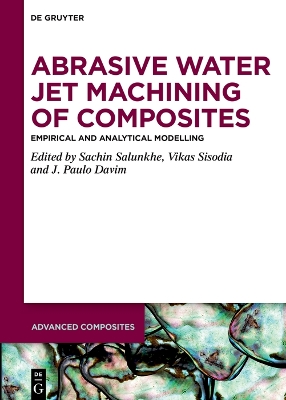
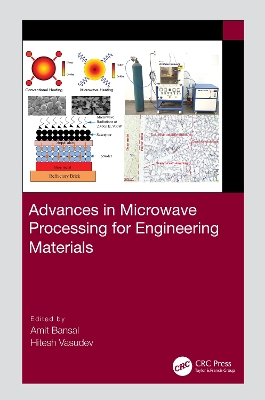
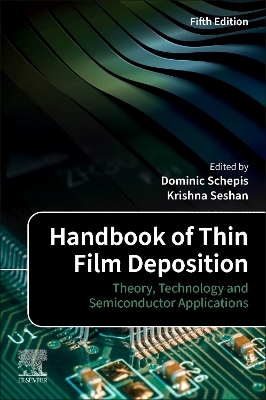
![[Set Green-Bond Forming Reactions, Vol 1+2]](https://images.marka.pt/api/v1/cover/book/9783110997538)

